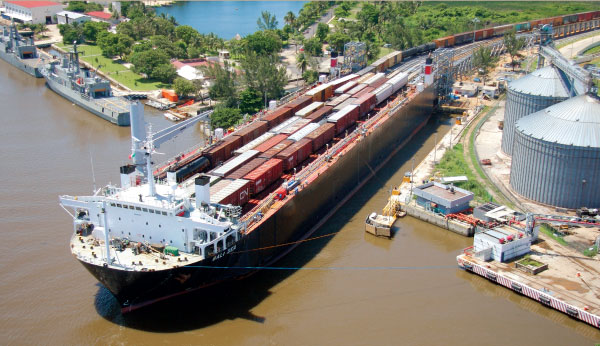Articles
Trends

Trends—January 2010
Guaging the Future of Marine Rail Rail intermodal solutions have become an important component of the U.S. supply chain as capacity, cost, and sustainability concerns warrant more transportation flexibility. The hitch for shippers is the time it takes to re-handle cargo, switch modes, and turn assets and inventory. Rail intermodal requires better forecasts, greater visibility, […]
Read MoreTrends
Pacer International and Union Pacific (UP) have entered a multi-year arrangement that allows the intermodal company continued access to the railroad’s network. That’s welcome news to some rail users. Foremost, the announcement puts to rest speculation about the company’s tenuous financial position. Pacer will use the $30-million cash infusion received as part of the deal […]
Read MoreTrends-November 2009
The green movement is many things to different parties. But the common element all environmentally conscious supply chain practitioners and consumers should take a vested interest in is transparency—from source to self. Environmental watchdog Greenpeace, whose mission is to bring clarity to environmental issues and threats, knows something about transparency. Proof to point, the organization […]
Read MoreTrends-October 2009
Shippers and service providers have enough difficulty meeting customer demand despite encroaching time, service, and cost constraints without political bureaucracy getting in the way. But it does. Pitched battles over quality of life and the goods that bring quality to life are frequent and fervent—and serve as yet another reminder that domestic transportation policy and […]
Read MoreTrends-Sep 2009
Hormel Foods is adding a little zing to its U.S. product offering thanks to a joint venture with Herdez Del Fuerte, a Mexico City-based manufacturer and marketer of consumer-branded food and beverages. Together, they are launching a new brand, MegaMex Foods, to market Mexican foods in the United States. MegaMex Foods, which is expected to […]
Read MoreTrends-May 2007
It has been a tough year for the trucking industry with empty stores, trailers, and gas tanks casting their lot against carriers and motor freight buyers alike. Shrinking budgets, expanding carbon emissions and fuel efficiency standards, and steady competition from rail/intermodal providers have similarly pushed truckers and shippers into a sustainability strata that augurs a […]
Read MoreTrends-May 2009
Lean times call for equal measures. The U.S. automotive industry has been decimated by a slumping domestic economy and increasing global competition. While some cash-strapped manufacturers join government “bread” lines, still others are turning to their assembly lines. In what amounts to a corporate mandate to level production and lean out its supply chain, General […]
Read MoreTrends-2009
When consumer spending dips, few companies target high-income shoppers as a potential revenue stream. But few companies can walk in Walmart’s shoes, and the retailer has both attracted more consumers and convinced them to buy bigger-ticket items. With a fresh new logo to boot, Walmart is cleaning up in more ways than one. Its stores […]
Read MoreTrends-February 2009
Boeing is making supply chain management a critical pivot as it tries to steer its way out of an economic vortex. As demand for new aircraft ebbs, and a machinist’s strike and failed component installation hamper the launch of the 787 Dreamliner program, the company is reconsidering its global supplier network. The Chicago-headquartered aircraft manufacturer […]
Read MoreTrends-December 2008
Pacific Coast ports have anchored U.S. trade during the past two decades, but shifting globalization and sourcing tides are altering domestic transportation currents. These changes are gradually recasting the U.S. intermodal footprint with potentially long-lasting implications, suggests a recent report by Drewry Supply Chain Advisors. Intermodal routings linking major West Coast port gateways with the […]
Read More